As you might expect there is much more to the aircraft seat than meets the eye. We caught up with Husam Hamdan, and Dave Napper from our design and development (cabin) team, to discover more about the fabulous flying furniture that is our economy class seat.
When you think about what your aircraft seat must do, it’s a big ask. It’s got to be comfy for every size of person. From the smallest child to the largest adult. You need to be able to relax in it, for hours at a time. It’s where you receive the fantastic service delivered by our cabin crew. Where you can eat, drink and sleep. Each seat features its own entertainment centre where you can watch movies, TV or listen to music. Most importantly, it’s where you can do all those things safely and it’s got to be easy to get into and out of.
The history of aircraft seats
Back in the very early days of flying most fledgling airlines existed just to deliver mail. In the US this was subsidised by the government and given a choice between carrying 100lbs of airmail or a person, the airlines would always choose the mail. It was more profitable. If there was any room left after the mail had been loaded, they’d offer to fly passengers. A wicker chair would be placed on board but not secured to the floor. This was in the days before aircraft were pressurised, which meant they flew at much lower altitudes and through much worse turbulence – quite an adventure on what amounted to a loose garden chair.
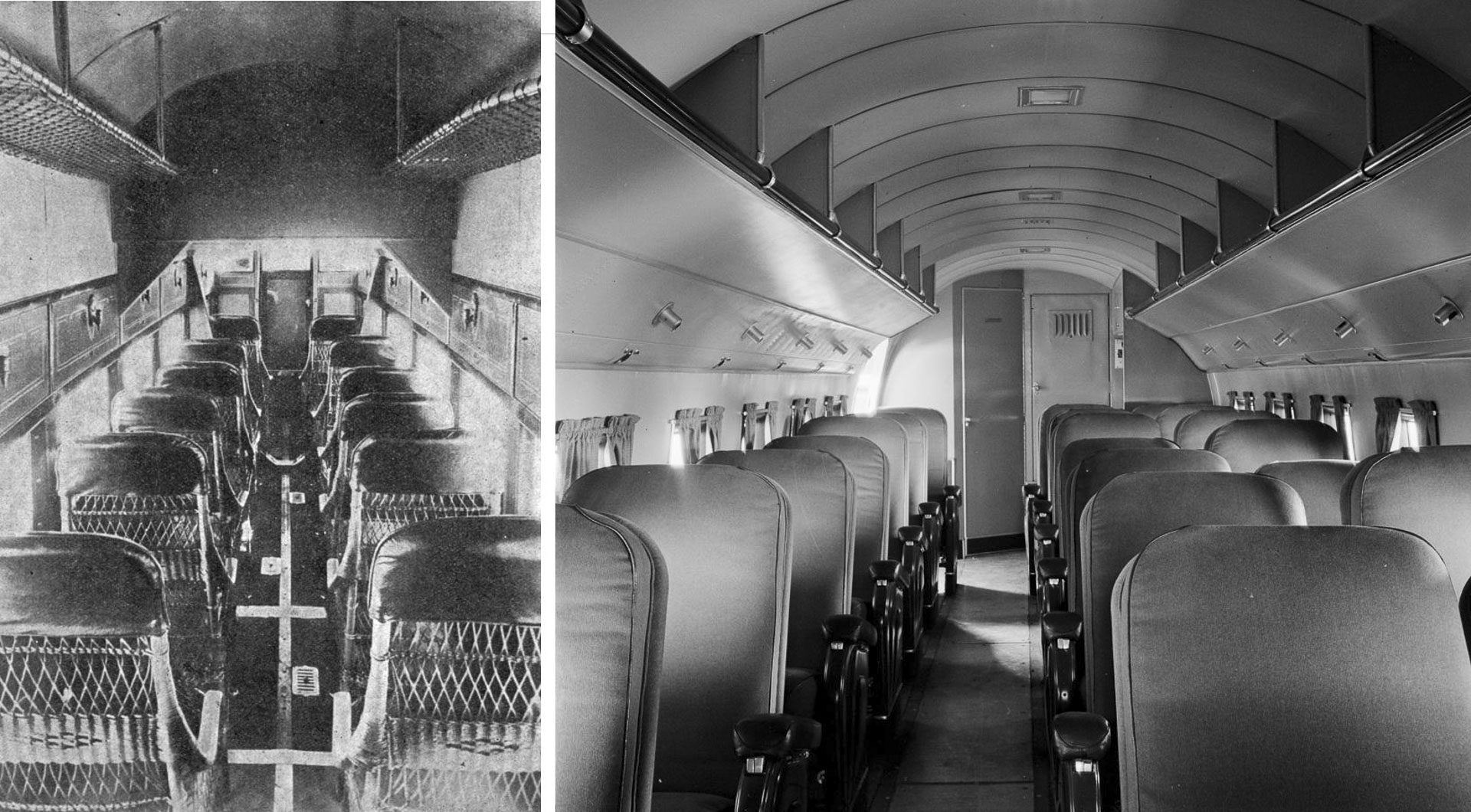
The wicker seats in a Ford Trimotor and early metal seats in a Douglas DC3 (note the lack of doors on the overhead luggage bins)
As passenger flying became more popular and the airmail subsidies were removed the first real passenger cabins came into existence. Early aircraft still used wicker seats, although thankfully, they were bolted to the airframe. The big advantage of wicker was that it was lightweight, something that was as important then as it is today.
As aircraft evolved so did the seats and the regulations that governed them. The first metal frame seats appeared after the second world war and with them the requirement to withstand crash testing to six times the force of gravity (6g). That was raised to 9g with the dawn of the jet age. Back in the 50s and 60s, despite being known as the golden age of travel, aircraft seats lacked many of the vital safety features they have today. Seat design has come a long way since then and in 1988 new regulations decreed all seats had to withstand forces of 16g with a host of other inbuilt safety requirements.
Buying an aircraft seat
If you’ve ever spent a day or two trying to choose furniture for your home, spare a thought for the people who have to buy aircraft interiors. Once an order has been placed for a new aircraft, it usually takes about three years to bring it into service. During that time our customer experience, design and engineering teams will take the basic tube shape of the aircraft fuselage and turn it into the gorgeous interiors you experience when you step onboard.
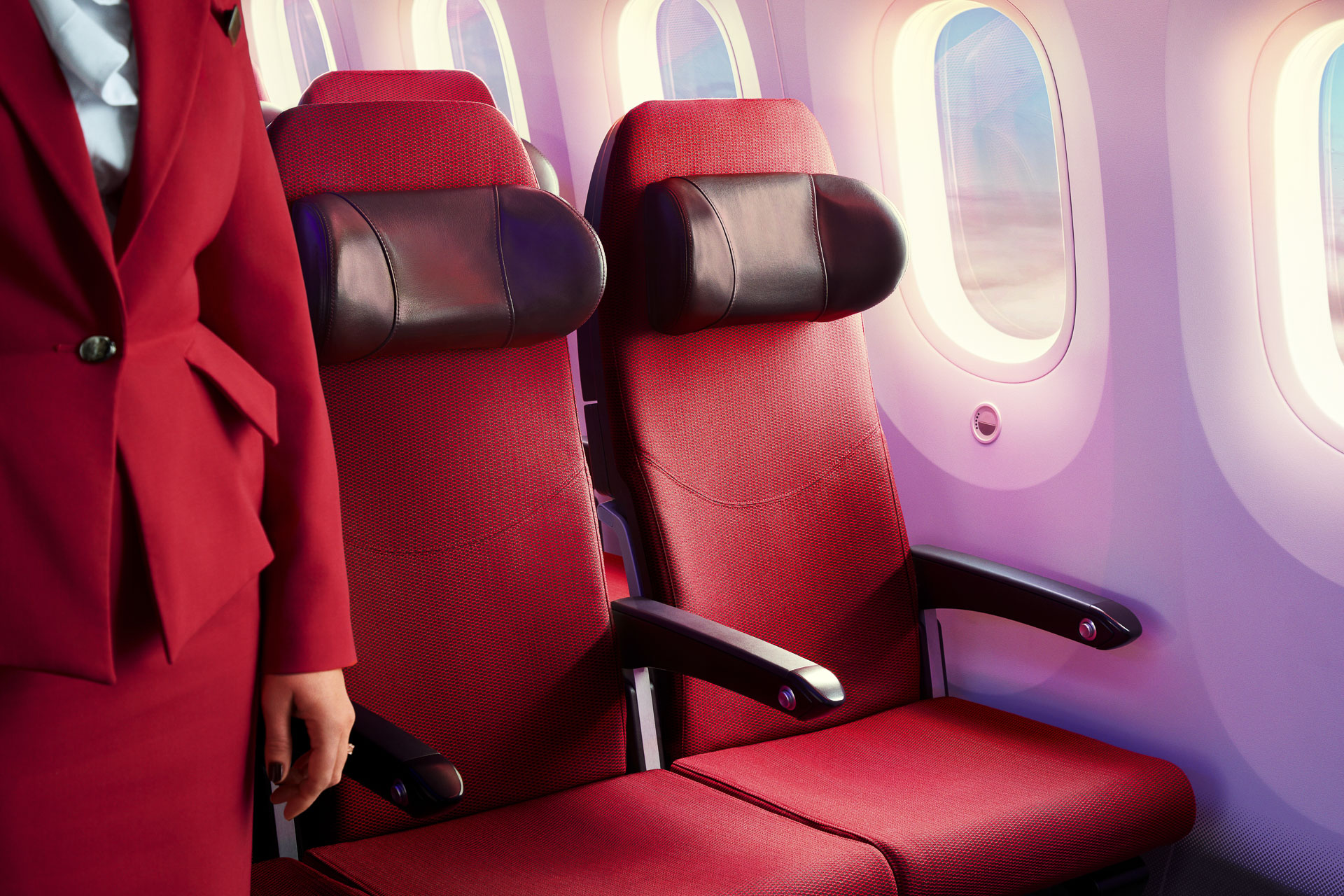
The Recaro economy class seats on our Airbus A350 aircraft
But before they can go shopping for seats, they need to lock down the cabin design. There are over 100 different configurations that can be applied to an Airbus A350. Our commercial and Network Planning teams needs to decide how many Economy, Upper Class and Premium seats to install and how to configure cabins bearing in mind the customer mix and routes that the aircraft will be flying. Choices are made about which galleys to install, number of lavatories, where to put the walls and ‘monuments’ (airline speak for cabin dividers and other features that are not seating) and where the emergency equipment is stowed. Everything needs to fit around the doors, and the aisles need to be wide enough to evacuate the aircraft quickly. The configuration is finalised on a highly detailed seat map called a LOPA (Layout of Passenger Accommodation) which needs to be approved by airline regulators and the aircraft manufacturer before work can start.
Only a handful of companies make aircraft seats and the choice of seat frame is limited, purely because getting them through the regulatory approvals is a long process. However, airlines can customise seats to include their choice of trim, fabrics, padding, entertainment systems and host of optional extras.

An assembly of three economy class seats
When buying seats, there are a million things that need to be considered. This is a multi-million pound investment which needs to meet our customers’ needs and expectations and stand the test of time. At every step of the way the project team balances three crucial elements: safety, comfort and weight. As you’d expect, safety comes first, and any modern aircraft seat is almost certainly the safest seat you’ve ever sat in. Once safety has been taken care of, we want our customers to be as comfortable as possible; this is especially important because we fly long haul routes. And finally, the seats need to be as light as possible. That’s because more weight increases the amount of fuel we burn, which in turn affects the cost of tickets and our environmental impact. Important stuff.
Once the seat frame is decided, we need to choose the seat foam and fabric, and there’s a lot to consider. For example, our Recaro Economy seats, offer a choice of different foam types which need to be assessed for durability and comfort. Like every decision we make sustainability is a big priority, and the covers and cushions need to be recyclable.
The anatomy of aircraft seats
Economy class seats are built-in assemblies of two, three or four seats depending on the layout of the aircraft. These are bolted to tracks that run along the floor of the cabin. Each seat consists of an aluminium frame together with flame retardant thermoplastic trims and soft furnishings for the seatbacks and the cushion bit you sit on (known in the trade as a squab). There’s your tray table, seatbelt and adjustable headrest, all of your inflight entertainment systems and that all-important pouch to store the safety card.
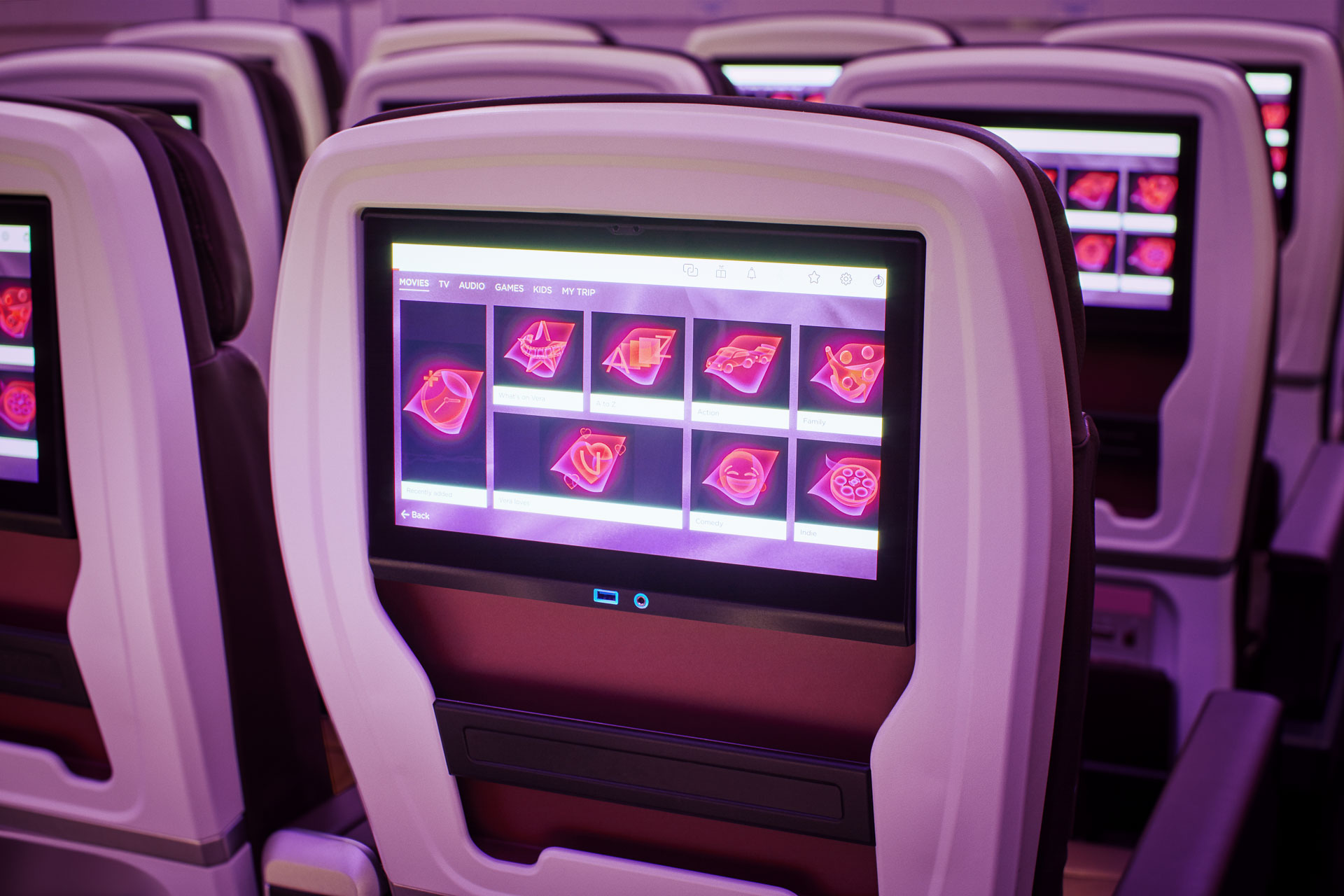
A sophisticated entertainment centre
From a design perspective, the seats must have just the right angles to be both comfortable, be able to recline whilst not adversely affecting fellow passengers. The designers will have thought about the multitude of seating positions our customers use for comfort during our worldwide flights.
The cushions and seat covers need to be durable enough to be sat in for up to 20 hours a day, 7 days a week. They must survive being slept in, pummelled by fidgety children (and adults) and have any number of things spilt on them. The seat fabrics need to be easy to clean, easy to remove, and easy to replace and must have the highest fire-retardant properties.
Every aspect of your seat is engineered and tested to incredible standards. The way the seat behaves in an emergency and how quickly you can get out of it in is of utmost importance. Safety is our top priority.
A significant part of any modern airline seat is the entertainment system. It’s a sophisticated, tough, robust system that delivers high quality visual and audio entertainment. It needs to be long lasting, easy to maintain and durable enough to withstand a multitude of customers pressing the buttons, getting to know it and exploring the vast library of programmes loaded by our onboard media team. To our customers, our in-flight entertainment is as important as the seat itself.
Regulations
In the world of aviation everything is tightly regulated, and the seats are no exception. Every nut and bolt of every seat has to comply with reams of rules and regulations and comply with ‘technical standards orders’ and ‘EASA ETSO’s (that’s the ‘European aviation safety agency European technical standard orders’ in case you’re wondering). If the recline doesn’t work, for whatever reason, the seat must be taken out of service. Similarly, if the tray table won’t stay up, the seat can’t be occupied, nor can any seat with access to the aisle blocked by that seat. Even the little seatback pocket which contains your inflight literature is mandatory. Its purpose is to make sure you have easy access to vital safety information.
Maintenance
Economy class seats are built-in assemblies of two, three or four seats depending on the layout of the aircraft. These are bolted to tracks that run along the floor of the cabin. Each seat consists of an aluminium frame together with flame retardant thermoplastic trims and soft furnishings for the seatbacks and the cushion bit you sit on (known in the trade as a squab). There’s your tray table, seatbelt and adjustable headrest, all of your inflight entertainment systems and that all-important pouch to store the safety card.
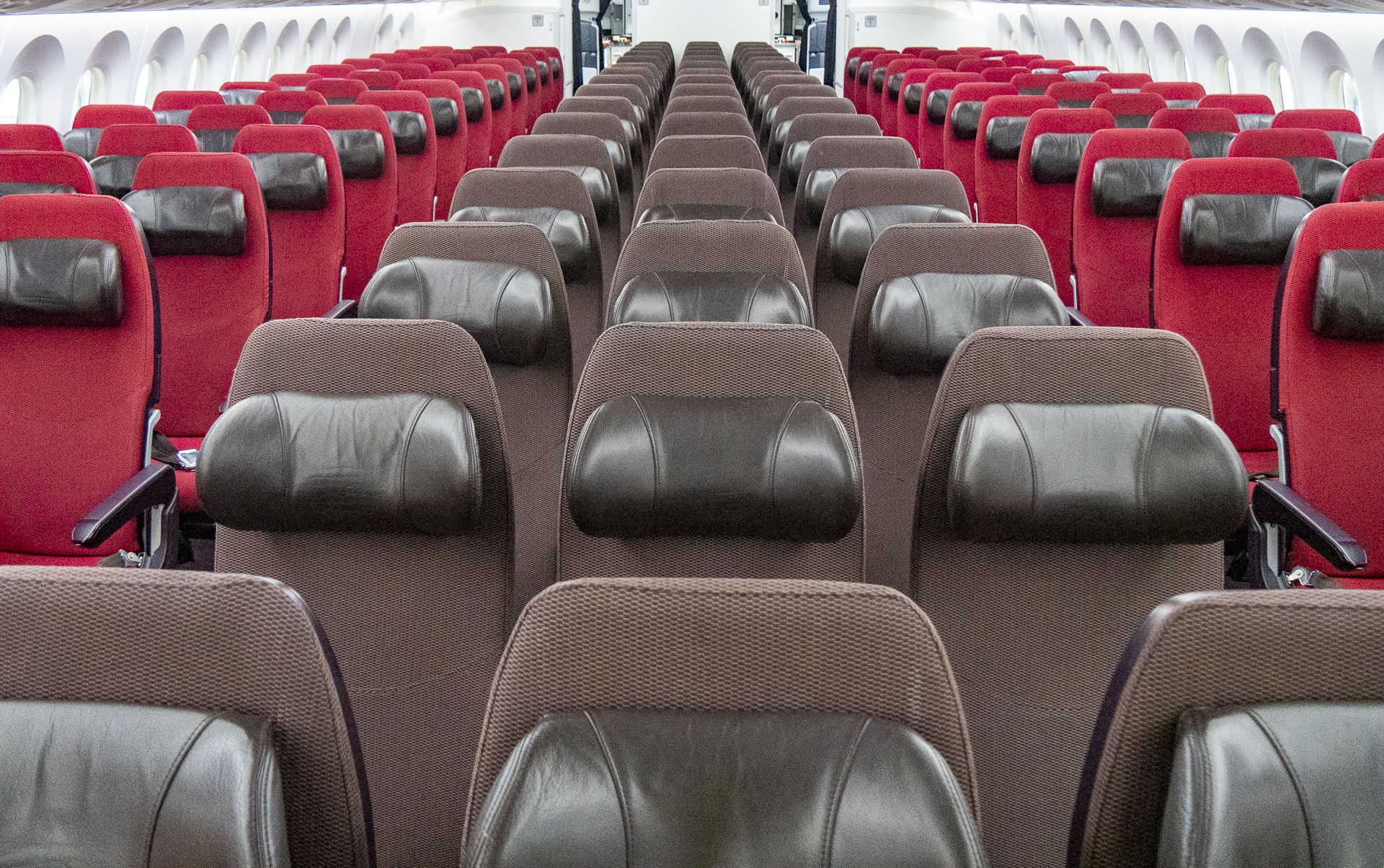
It takes a lot of work to keep our cabins looking like new
And it flies
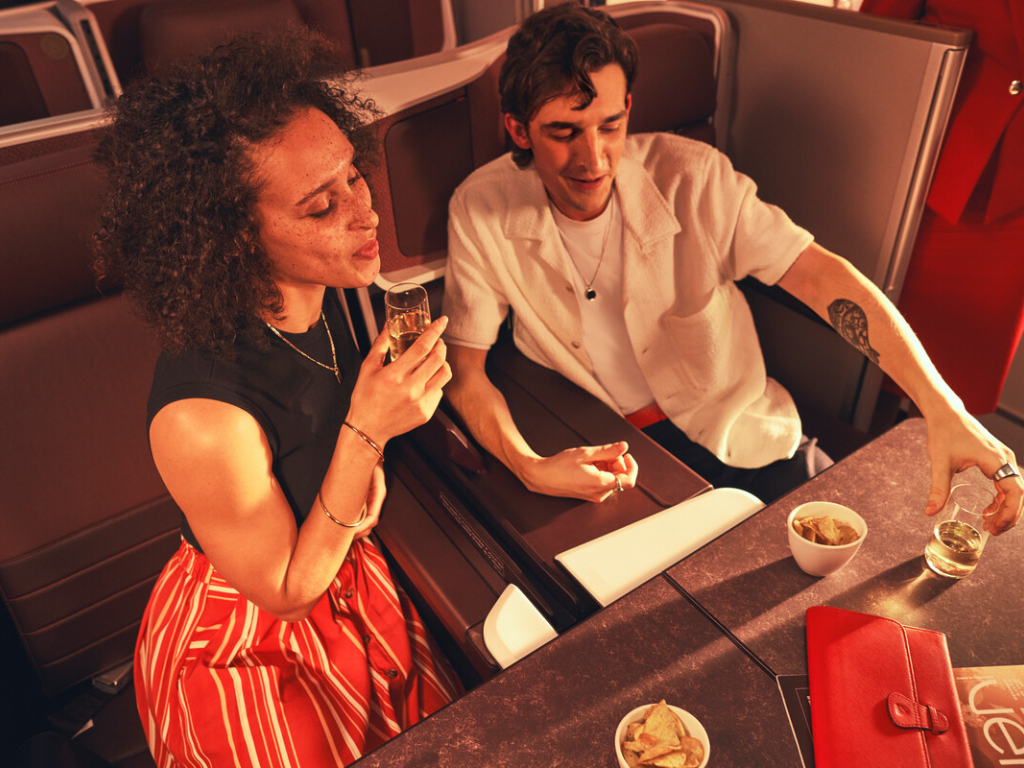
The modern airline economy seat needs to be all things to all people. It’s a chair, a recliner, a cinema seat, a restaurant table and a bar stool. It’s a top end designer seat, it’s light and it’s the safest seat you’ll ever sit in. And most impressive of all? It flies! Through the sky. To the other side of the world. Surely the most awesome piece of furniture ever created. Book your seat now at virginatlantic.com
